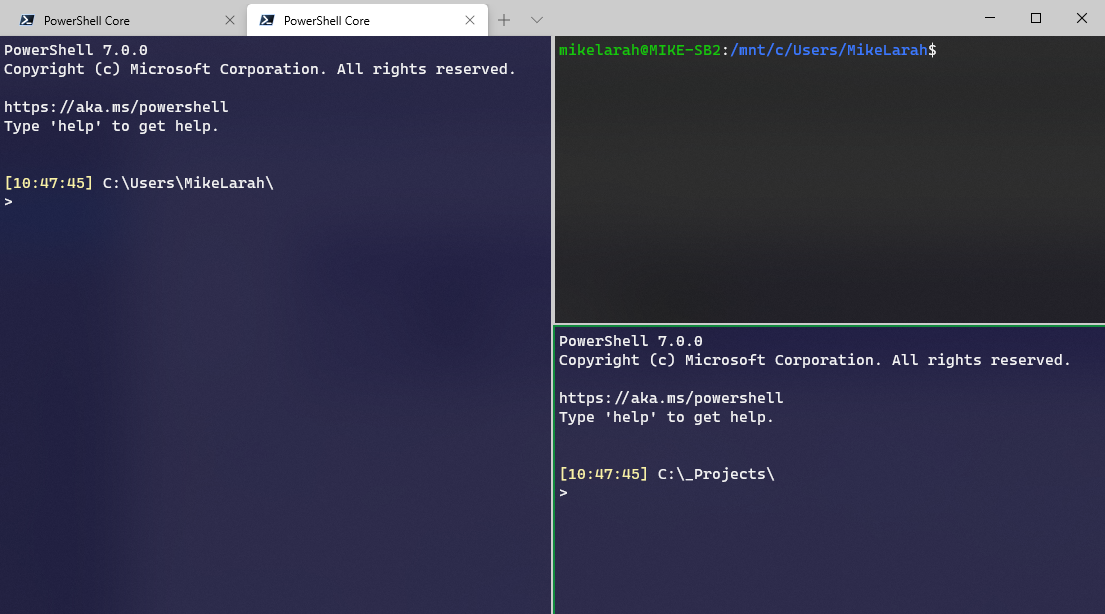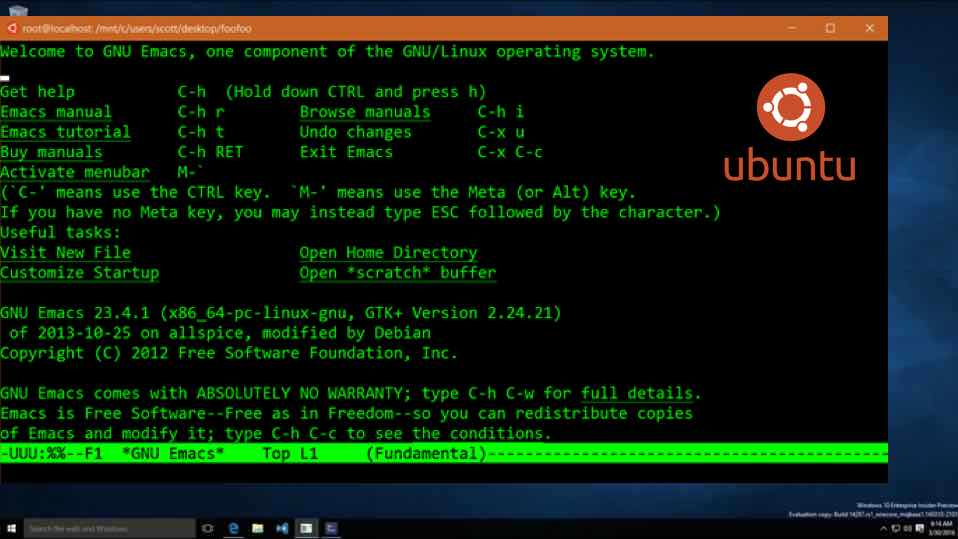

#Ubuntu open new windows on top full#
You’re going to get a full rundown of nearly all features of Windows Terminal. In this Ultimate Guide, you’re going to learn about one of the best consoles around for developers the Windows Terminal. One of the tools any developer will use the most is the console.

How these tools look and feel can mean all the difference when spending hours at a time looking for that one hard to find bug.
#Ubuntu open new windows on top software#
It’s no wonder that software engineers build such strong relationships with the tools they use! It will also make you start over because you put a capital letter in the wrong place.

At the end of the day, the entire job is about writing instructions in a strange language for a picky interpreter that will shut down everything you’ve worked on. Noticed an error above? Let me know in the comments, tweet or email me.Developing software is a finicky job. Leave me a comment or tweet me your thoughts. Enable the new Bash on Ubuntu on Windowsġ – Right click on the Start icon and select Programs and Features.Ģ – Click Turn Windows features on or off.ģ – Scroll down to the new Windows subsystem for Linux and tick it, click OK.Ĥ – Wait for it to apply and reboot when prompted.ĥ – Once the reboot is complete, login and open the command prompt. Type bash and hit Enter.Ħ – Type y to confirm you’re happy to proceed.ħ – When complete it’ll pop you straight into bash.įollowing this, you can access bash either by typing “bash” in the command prompt, or opening the new “Bash on Ubuntu on Windows” app in your apps list (providing the installation doesn’t error like mine did!).Īre you excited for Bash on Windows 10? Have you already enabled it?ĭid you enjoy the video? Would you like to see more in the future? Should you not be able (or wish) to view the video, the steps to enable Bash are documented below. NB: The error which showed up towards the end meant there was no Start entry for Bash (it’s a preview, so I guess these things happen) but running Bash from the command line will launch it in the same way regardless. Unfortunately that didn’t turn out too well, so today I decided to do the installation again on a fresh VMware image, then edited it up nicely and popped a voice-over on top: I re-enrolled onto the Insider Preview fast ring to check it out and after enabling developer mode, took a rough-and-ready video of my desktop as I enabled Bash. Similarly, as this basic Ubuntu image is installed into a directory as any other program would be, it’s just as easy to manipulate files and folders within the directories there, too. They call it “Bash on Ubuntu on Windows” and it absolutely rolls off the tongue.Īlthough tools like Cygwin have been around far longer than I’ve worked in IT, they don’t offer the integration Bash on Ubuntu on Windows (henceforth referred to as Bash) aims to provide one of those primary integrations being the capability for direct access to and manipulation of files and folders on the Windows partition. Utilising this subsystem, Microsoft have worked with Canonical to provide a bare-bones Ubuntu environment accessible through Bash. After many, many years of wishing there were more Linux utilities within Windows (native SSH anyone?), Microsoft have finally developed what they call their “Windows subsystem for Linux” – what many are referring to as the equivalent of Wine for Linux.


 0 kommentar(er)
0 kommentar(er)
